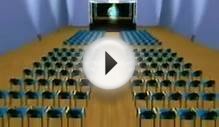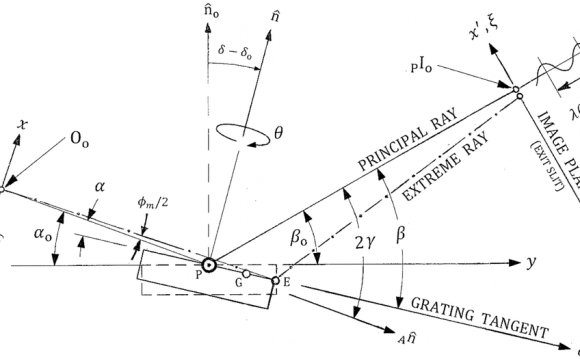
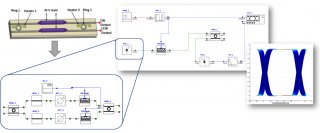
Traveling Wave Laser
The new INTERCONNECT traveling wave laser element self-consistently incorporates the effects of external feedback and resonances, allowing it to be used in the design of hybrid III-V Si-SiO2 laser chips as well as integrated lasers driving PICs. An individual laser element can simulate Fabry-Perot lasers, and in combination with external elements new devices can be simulated, such as external cavity and multi-section lasers.
Figure 1: A new 1D traveling wave laser model incorporates the effects of external feedback and resonances, allowing it to be used in the design of hybrid laser chips as well as integrated lasers driving PICs.
The laser model propagates the complex slowly-varying amplitudes of forward and backward traveling optical modes through the gain medium in the time domain on 1D grid in the longitudinal direction. The transverse properties of each mode are characterized by scalar quantities such as effective and group index, and mode confinement to the gain region which can be accurately pre-calculated with an Eigen mode solver. Frequency and local carrier dependent gain and stochastic spontaneous emission are included using digital filtering, and carrier concentrations are updated based on optical gain, spontaneous emission, and non-radiative recombination rates. Register for the upcoming webinar
Traveling Wave Waveguide Bragg Grating
In order to improve large scale photonic integrated circuit design, the INTERCONNECT Waveguide Bragg Grating primitive element model was extended to support full dynamic behavior. The new compact model now allows for static or full time-dependent analysis of waveguide gratings, enabling fast and accurate simulation of integrated circuits such as external cavity lasers.
Figure 2: Extended Waveguide Bragg Grating model supports modeling of dynamic behavior in time-domain.
Compact Model Library Development and Distribution
Two new licensed features enable the secured generation and use of customized compact model libraries (CML). These features can be used to generate calibrated CMLs distributed with foundry PDKs or to efficiently protect and distribute internally developed custom element libraries among various design groups or customers.
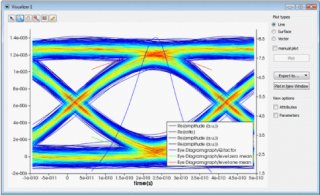 Figure 3: INTERCONNECT can now install/package compact model libraries (CML)
Figure 3: INTERCONNECT can now install/package compact model libraries (CML)
With the CML publisher, a designer can define and package a library of compact model elements for distribution or inclusion in a PDK package. Critical proprietary data such as hierarchical circuit definitions of compact model elements, performance data and process parameters can be obfuscated upon packaging and are accessible only with an associated CML reader license.
The CML reader allows designers to open and use a packaged CML published using INTERCONNECT. All required compact model elements are installed into the design kit folder and can be used to design, simulate and optimize photonic integrated circuits. Underlying proprietary data used to define the models remains obfuscated.
Figure 4: INTERCONNECT can perform calculations in the frequency domain and the time domain. The eye diagram shown above is one of the time domain simulation results that measure the integrity of the received signal.
Powerful set of circuit solvers to model multimode, bidirectional, and multi-channel photonic integrated circuits too large to address with other simulation methodologies. The user can choose between conducting a time-domain or a frequency-domain analysis based on the requirements of the particular design challenge being addressed.
Figure 5: Circuit schematic of a finite-impulse response (FIR) optical half-band filter.
- INTERCONNECT supports vectorial drawing of individual photonic integrated circuit elements and schematic views, including element symbols and connections
- Back annotation feature incorporates simulation data in schematic editor
- Tree view of the entire collection of data that defines the project allows the designer to easily navigate photonic circuits containing many elements
 Figure 6: Element tree depicts the hierarchical definition of elements in INTERCONNECT
Figure 6: Element tree depicts the hierarchical definition of elements in INTERCONNECT
- INTERCONNECT supports hierarchical definition of Compound Elements
- Compound Elements can be used to create increasingly complex photonic integrated circuits based on sub-circuit elements
- Unrestricted number of layers of hierarchy enable arbitrary levels of photonic integrated circuit complexity
- INTERCONNECT also supports design parameterization of Compound Elements to facilitate parameter sweeps and design optimization design tasks
Figure 7: The library contains an extensive list of customizable and pre-defined elements.
- INTERCONNECT includes an extensive list of pre-defined PIC elements, including optical sources, measurement elements, and both passive and active optoelectronic devices
- PIC element categories include: waveguides, sources, detectors, transmitters, receivers, modulators, filters, mathematical elements, signal processing elements and others
- Custom PIC elements can be defined with analytic or imported s-parameter representations via Lumerical’s script language or MATLAB.
- Lookup tables containing design intent parameters offer support for the development of process design kits (PDKs)
Figure 8: Circuit verification using INTERCONNECT and OpSIS PDK after importing a SPICE netlist from Mentor Graphics Pyxis Platform.
- Incorporate sophisticated PIC element descriptions by incorporating highly-accurate physical designs from Lumerical’s electromagnetic simulator products DEVICE, MODE Solutions and FDTD Solutions
- Optical SPICE netlist import supports co-simulation with third-party layout versus schematic verification software tools
Visualization and Data Analysis
Figure 9: Analysis of the circuit behavior includes amplitude, phase, group delay and dispersion.
The built-in visualization and result management tools in INTERCONNECT allow users to analyze and visualize variables and results intuitively through the GUI. All the available simulation results as well as variables in the current workspace are clearly displayed in dialog windows, and each can be viewed in the Visualizer, providing additional GUI-based functionalities.
Integrated Scripting Language
INTERCONNECT also includes a powerful scripting language for design parameterization, analysis, and visualization. Within the design environment, you can use the script language to construct your geometric model, parameterize your design and precisely adjust key properties, run simulations, and analyze results. The scripting environment supports MATLAB® script integration and data exchange for engineers working with both tools. The scripting language is shared between all Lumerical products, making design and analysis portable.
Corner Analysis
INTERCONNECT includes Lumerical's parameter sweep, optimization, and yield toolbox. With parameter sweeps, it's easy to perform a corner analysis to characterize the performance of the design over a variety of operating conditions and process variations. Parameter sweeps can be nested or run in tandem, and results can be visualized directly from the sweep.
Design Optimization
In addition to running parameter sweeps, one can also use Lumerical’s optimization tool to zero in on the ideal design. Optimizations (based on algorithms) are very useful for covering large parameter spaces efficiently.
Yield Analysis
The yield analysis tool allows users to run extensive Monte Carlo analysis, sweeping across multiple parameters to assess statistical variations in the specified performance metric.
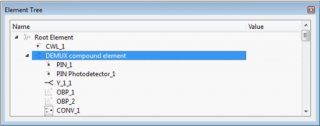
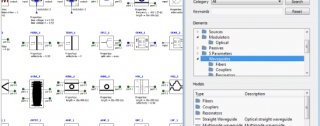
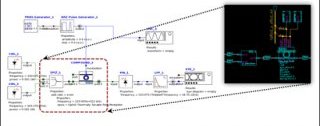
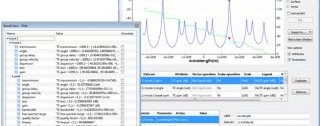
RELATED VIDEO

